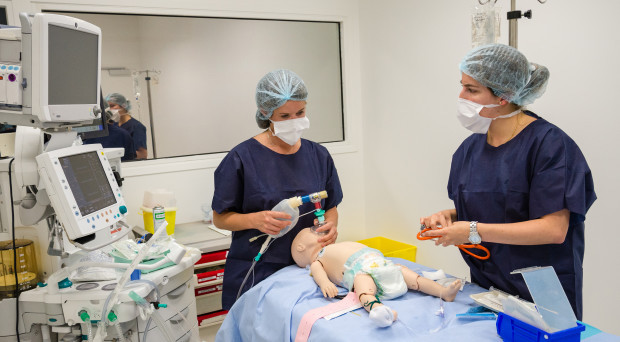Evidence-based practice (EBP) attempts to identify the differences and provide a pathway to ensure that current medical practice is based on interventions that are most likely to benefit the patient. Medical care cannot be based on the notion that “this is the way we have always done something” but rather what research has shown to be the most effective. Today’s article was guest authored by Kim Baily PhD, MSN, RN, CNE, Simulation Coordinator for Los Angeles Harbor College. Over the past 15 years Kim has developed and implemented several college simulation programs and currently chairs the Southern California Simulation Collaborative.
Defining Evidence-Based Practice
Evidence-based practice has a number of very similar definitions:
- Evidence based medicine is the conscientious, explicit, and judicious use of current best evidence in making decisions about the care of individual patients. The practice of evidence based medicine means integrating individual clinical expertise with the best available external clinical evidence from systematic research. Sackett, D.L., Rosenberg, W., Muir Gray, J., B.Haynes, Richardson, W. Evidence Based Medicine: What It Is and What It Isn’t. BMJ 1996; 312
- Evidence-based practice is the conscientious integration of best research evidence with clinical expertise and patients values and needs in the delivery of high quality cost-effective health care systems (Burns, N and Grove, S.K. 2007. Discovering Nursing Research Understanding Nursing Research: Building an Evidence-based Practice. 4th Edition. Saunders).
- Although the definitions are similar, the second version specifically includes a consideration of patient values and needs.
- Evidence-based practice can be applied to all healthcare disciplines including psychology and education.
- No matter what the setting, the ultimate goal of EBP is to foster better patient outcomes, improved patient safety and better quality of life.
- The IOM’s recommendation:
- By 2020 evidence-based practice should determine 90 percent of patient decisions. This recommendation illustrates the IOM’s belief in the value and patient-focused benefits of evidence-based practice.
- There is often considerable lag between research findings and implementation into general medical and nursing practice. Change is not always easy.
The Seven Steps of Evidence-Based Practice
- Cultivate a spirit of inquiry within an EBP culture and environment.
- Ask the burning clinical question in PICO(T) format.
- Search for and collect the most relevant best evidence.
- Critically appraise the evidence (i.e., rapid critical appraisal, evaluation, synthesis, and recommendations).
- Integrate the best evidence with one’s clinical expertise and patient preferences and values in making a practice decision or change.
- Evaluate outcomes of the practice decision or change based on evidence.
- Disseminate the outcomes of the EBP decision or change.
Evidenced-Based Practice and Simulation
- Simulation has now become widespread in both academic programs and postgraduate and professional training.
- Research data reveals numerous examples of the benefit of simulation-based medical education. For example, implementation of protocol-based practise into postgraduate training. In one study, second year medicine residents who had gone through simulator training were found to adhere to the American Heart Association guidelines 68% of the time, as compared with 44% of the time for traditionally trained third year residents.
- Simulation can also be used for practice change pilot studies before implementation into general practice.
Difference between research and EBP
- Research is a scientific process that validates and refines existing knowledge and generates new knowledge that directly or indirectly influences medical and nursing practice.
- EBP is the integration of best research evidence with clinical expertise and patients values and needs in the delivery of high quality cost-effective health care.
- Much of the EBP literature in medicine is based on the PICO format
- Patient Population
- Intervention (new EBP)
- Comparison of intervention
- Outcome
- (Time -some literature adds time)
- Simulation is sometimes used to evaluate new interventions.
As an educational methodology, healthcare simulation is constantly changing as new research data reveals better ways to implement practice. In other words simulation education has its own set of EBP. Many larger sim centers are involved in research:
- Research interventions to improve medical and nursing care.
- Undergraduate education.
- Training of healthcare professionals.
- Trial of proposed change in practice before “live” implementation in the patient care arena.
- Research interventions to improve simulation methodologies
- Indirectly leads to improved patient care.
In either case, simulation personnel can assist with enhancing EBP by understanding the process of both the scientific process (research) and the process of EBP. Future articles will highlight some basic research methodologies and principles frequently considered in simulation based research.
Learn more about Evidence-Based Simulation Education in Medicine!
Have a story to share with the global healthcare simulation community? Submit your simulation news and resources here!








